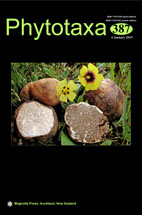Abstract
Red algae are the most conspicuous component in algal drifts that periodically arrive on the coasts of the Yucatan Peninsula. Given the presence of agars and carrageenans in their cell wall and the synthesis of secondary metabolites that act as antitumors or antioxidants, most of these species are highly valued in the international market. However, in this region of Mexico they are not used but represent a problem of waste from beaches. Our aim was to determine the composition of marine red algae of economic use in the algal drifts of the Yucatan Peninsula, providing brief descriptions, photographs that facilitate their identification and possible explanations for their causes and routes of origin. 13 samplings were carried out at 14 sites, collecting fresh and complete thalli from which the species of economic importance were described. 24 species distributed in six orders and seven families were identified. The most abundant families for both the number of species and the amount of biomass were Gracilariaceae (10 species), Rhodomelaceae (6 species) and Solieriaceae (3 species). The localities with the greatest diversity and biomass were those belonging to Campeche: Sabancuy (11 species), Punta Xen (14 species), Tortuga Bay (13 species) and Playa Bonita (13 species). From the present study we contributed six new records endemic to Campeche, including the first record of the genus Codiophyllum for the Western Atlantic Ocean. Our data on diversity, biomass, periodicity and growth rates of red algal drifts allow us to suggest that the Campeche and Yucatan drifts are a sustainable source of raw material.

